As a human, if you want to travel internationally nearly always you’ll need to apply for a passport. So, it would make sense that if you want to take your pet overseas, you’d also need a passport. However, when it comes to pets, the rules for travelling internationally are quite different. Pet passports do exist, but they’re quite different to human passports.
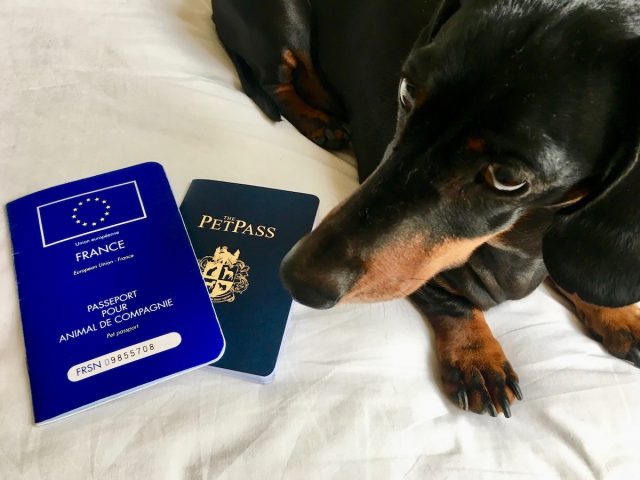
Regulations for Pets Travelling Internationally
The main regulations regarding whether a pet can enter another country are to do with preventing the spread of diseases.
Most frequently pets will require an up-to-date rabies vaccination and a health certificate. But the rules change from country to country, ranging from very basic to long and complicated (sometimes combined with a period in quarantine).
Unlike humans, there are no visas for pets, or limits on how long they can stay in a country. In fact, the concept of “citizenship” that applies to humans doesn’t exist.
In most cases, the same rules apply for a dog returning to its country of origin as for any other dog in the world travelling to that country. (So, when I returned back home to Australia, my dog still needed to undergo the same rigorous preparation including a stay in quarantine.)
Do Dogs Need Passports?
Sometimes the term “pet passport” is used to describe the paperwork required for the import of pets. That is, the pet passport is the health certificate required to enter a country, along with the accompanying vaccination certificates or lab test reports.
Based on this definition, then yes, dogs need passports, as they nearly always need a health certificate and other paperwork to enter most countries. However, the term “pet passport” is not always used by the government departments.
On the other hand, there are also some parts of the world that have actual pet passports, similar to human passports. These documents are used to record vaccination records and more, so separate health certificates are not required.
The European Union (EU) Pet Passport
The most commonly encountered official pet passports are those for the EU countries. Because of the EU regulations that exist to make it easy to travel between the EU nations, a standard pet passport is used across all EU countries.
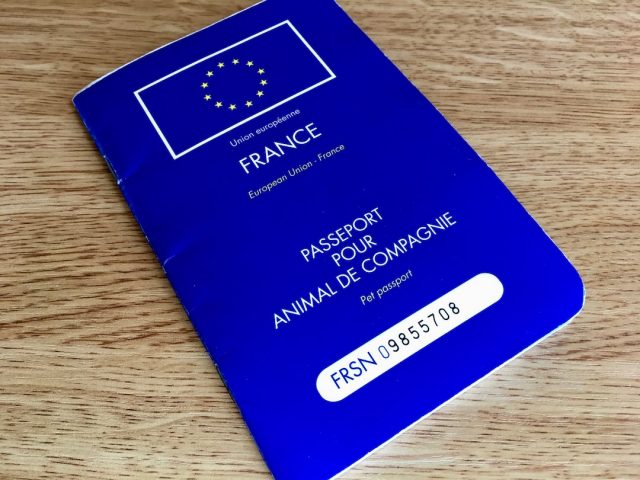
The front cover lists the country of issue (generally but not always the country of residency of the pet), while the inside is fairly similar except for the languages used. (My dog’s French pet passport contains French plus English.)
Inside, the first section contains ownership details and identifying details for the pet, including name, species, breed, date of birth and the important microchip code, plus room for a photo, although that is optional – a far cry from human passport photo rules!
The rest of the pet passport contains room for recording rabies vaccinations, rabies antibody titration test results, anti-echinococcus (worming) treatments, other anti-parasite treatments, other vaccinations, clinical examinations, and legalisation.
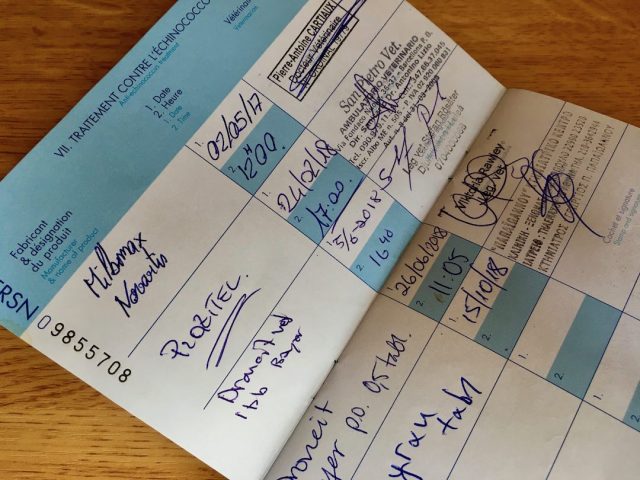
There’s also room to record annual vet check-ups, if desired, at the back of the booklet.
The passport contains everything required for pets to move between countries in the European Union, plus to return to it after travelling to other countries. While other pets need to get a health certificate certified by their export country, a pet with an EU pet passport with a current rabies vaccine performed in the EU recorded in their passport can bypass this step.
For this reason it’s also beneficial for pets regularly travelling to the EU from countries like the USA or Canada to get an EU pet passport.
Other Official Pet Passports
A number of other countries outside of the EU, mainly in Europe, also have a similar pet passport.
For starters, the EU counts a small number of other countries and territories in Europe as applying rules equivalent to the EU for the transportation of pets. These countries and territories are: Andorra, Faroe Islands, Gibraltar, Greenland, Iceland, Liechtenstein, Monaco, Norway, San Marino, Switzerland and Vatican City State.
I believe all of these countries have a pet passport similar to the EU, although maybe not the Vatican City given its small size! Certainly Norway has a pet passport that looks very similar to the EU pet passports, while Switzerland has a pet passport with a distinctive red cover.
Another country outside of the EU with a pet passport is Turkey, which features the Turkish symbol of a white crescent and star on a red background on the cover. Meanwhile, the UAE has falcon passports!
Introducing the Pet Pass
Just because your dog is from a country that doesn’t issue pet passports, doesn’t mean that you dog should miss out on having their own dog passport.
The Pet Pass is a novelty pet passport that you can order for your pet, including the option to have a custom printed photo and information page, just like in a human passport.
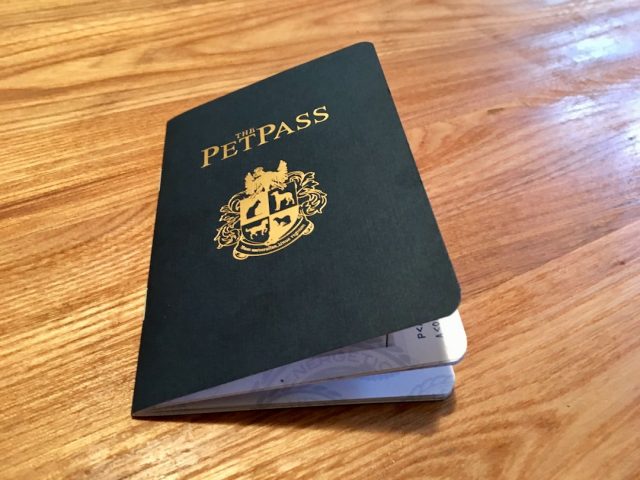
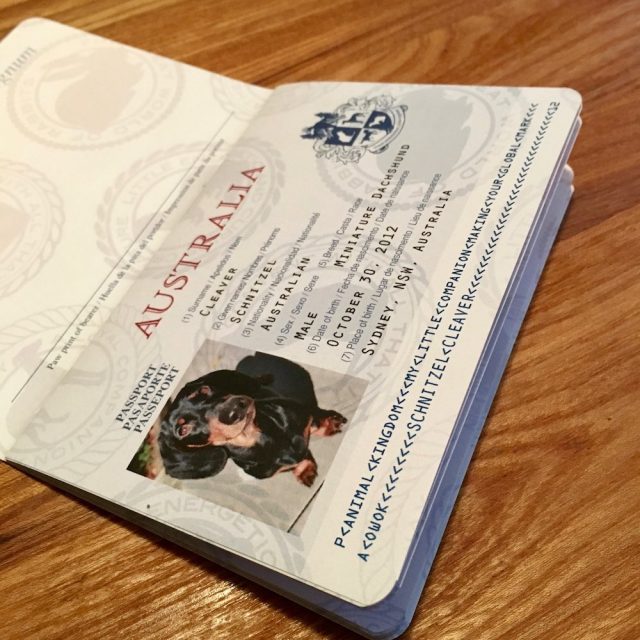
The passports are designed and printed in the USA, although can be shipped to anywhere in the world, with your dog’s country listed in the details.
Inside the Pet Pass are pages for you to enter further identification details for your dog (colour, microchip or tattoo, even a pawprint), plus your own details and an emergency contact and vet phone number. There’s also two pages to record vaccinations.
But my favourite feature of the pet passport are passport stamp pages for you to record the countries or states that you dog has visited, including entry and exit dates.
If travelling in the USA, I recommend also ordering the state stickers, which are a fun way to track the different states that your pet has visited. Schnitzel is up to 11 US states!
Find out more about the Pet Pass and order one for your pup!
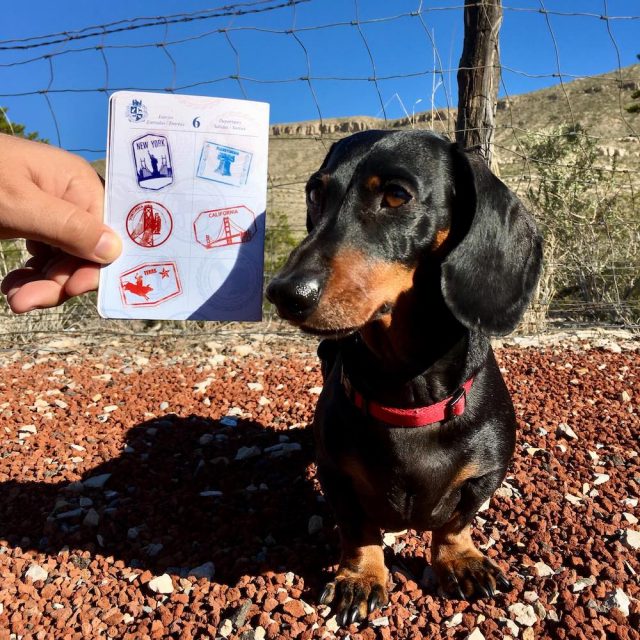
You May Also Like
- How to Get an EU Pet Passport for Your Dog
- Taking Your Dog to Europe: Vaccines & Paperwork
- How to Bring a Dog to the USA: Vaccines & Paperwork
About the Author

Shandos Cleaver is the founder of Travelnuity: Dog-Friendly Travel. She has travelled extensively with her Miniature Dachshund, Schnitzel, including to 33 countries across Europe, every state and territory of Australia except Tasmania, and 10 of the United States. She’s passionate about providing inspiration and information to others wanting to travel with their dogs, whether close to home or internationally.
Inspired? Pin this to your Pinterest board!
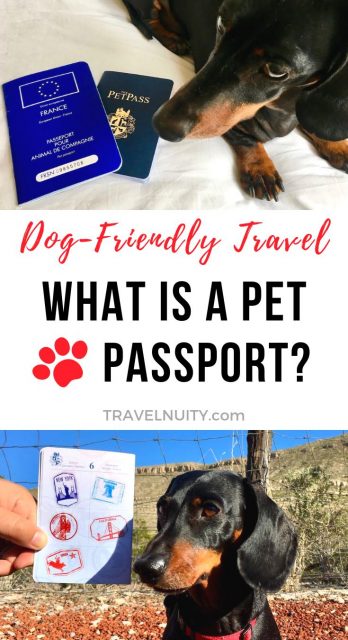

DO I HAVE TO HAVE A PET PASSPORT FOR MY CAT
This depends on where you are located and where you are going. In the EU, it is required to have an EU pet passport if crossing borders. In many other parts of the world, there aren’t official pet passports.
Good afternoon,
My Wife and I have a homes in Spain and the UK, our dog travels with us back and forth (via France) at least once a year and now the UK is out of the European Union his Pet Passport issued in the UK is no longer valid, it is clear from the Blog (great information by the way) that I can apply for a Spanish issued Pet Passport in the town where our Spanish house is located, the two questions that I have are:-
1. How long is the European Union (Spanish issued) Pet Passport valid for?
and
2. Once we have completed the European Pet Passport application with the Spanish Vet are there any issues with him coming back to the UK on that passport ( assuming he has had his worming treatment within the appropriate amount of days prior to travel)?
Fionna and Chris
The EU pet passport will be valid for the life of your pet, although it is best to get your dog’s rabies boosters done in Spain and entered in the pet passport. If it is done in the UK, you will need a health certificate again to enter the EU. (And if a UK vet records rabies vaccines in the pet passport, it is invalidated.)
It is fine to return to the UK using the Spanish pet passport, with the worming treatment recorded in it. Alternatively, you can use the pet health certificate from the UK, if less than 4 months has elapsed, but I’m not sure where to record the worming treatment in that case.
There is a place on the UK health certificate for a European vet to fill details of the worming treatment and to stamp and sign.